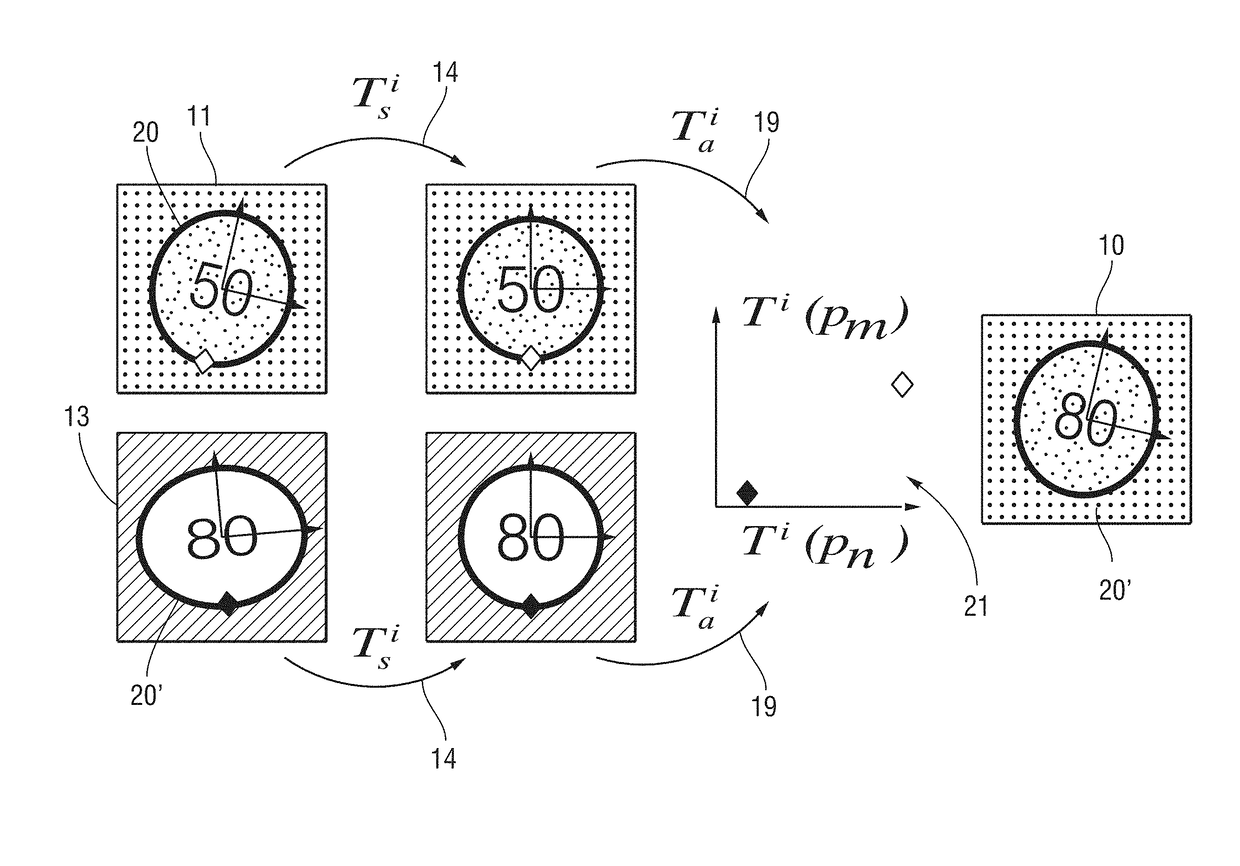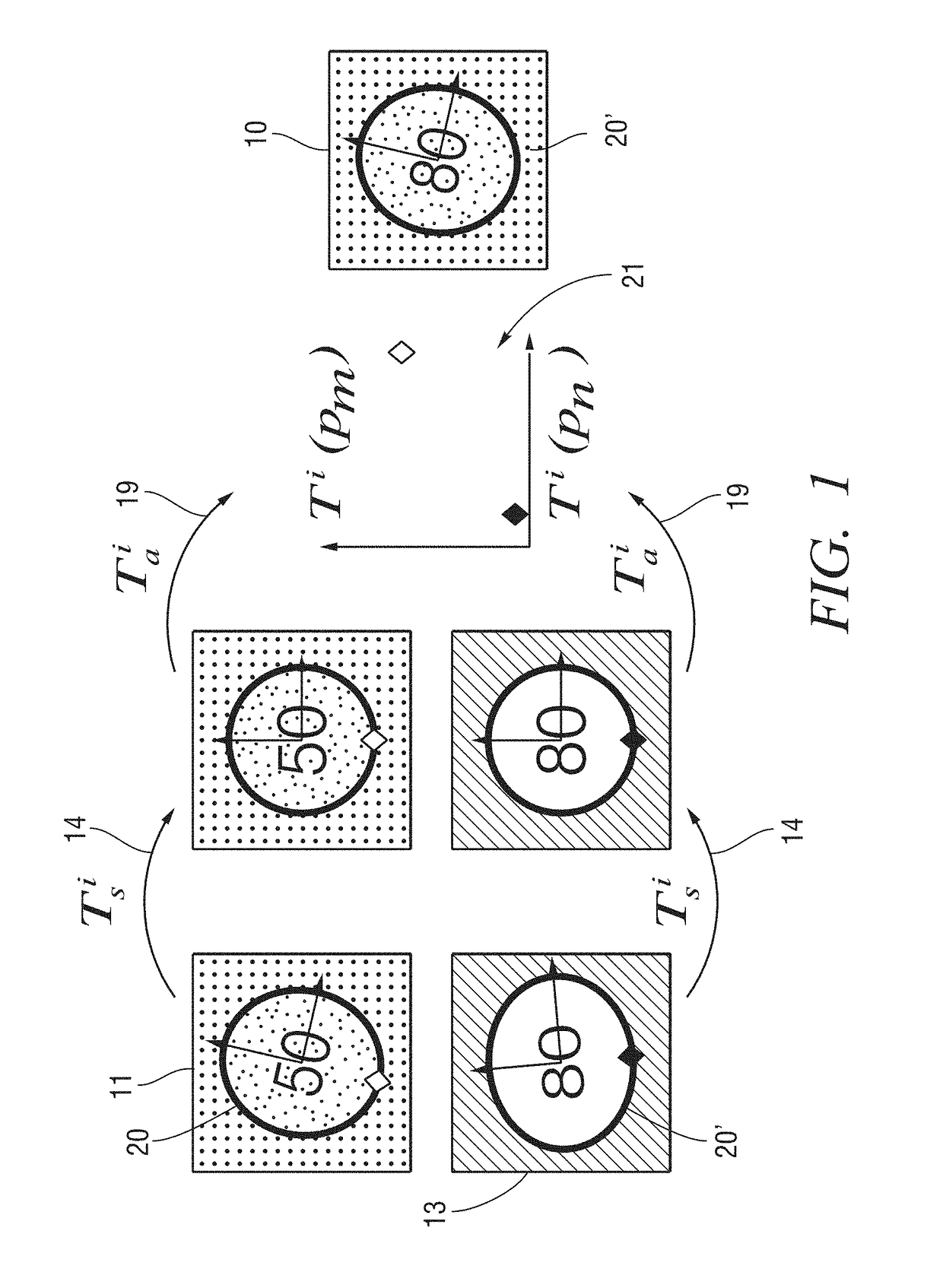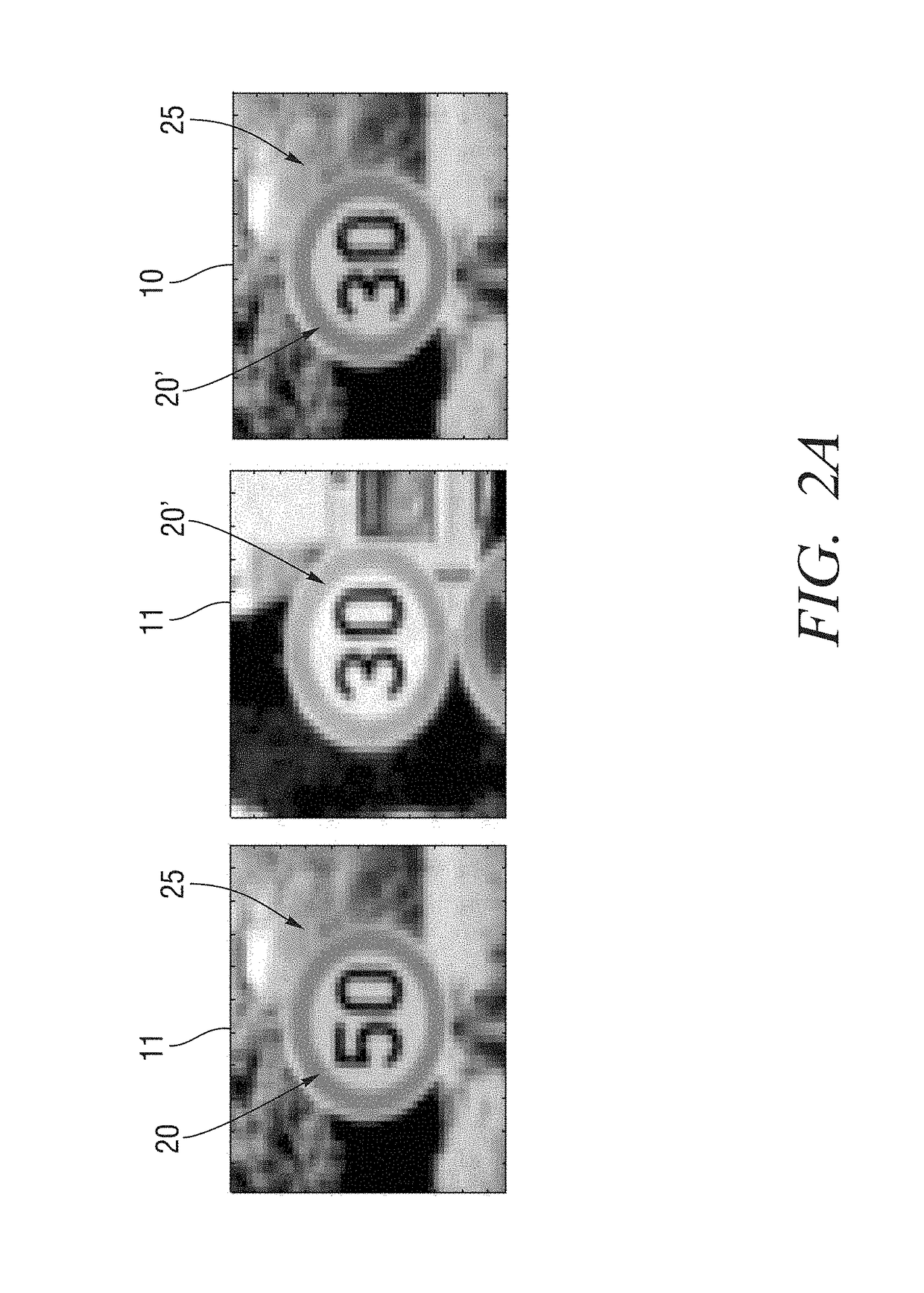Method of generating a training image for an automated vehicle object recognition system
a vehicle object recognition and training image technology, applied in image analysis, image enhancement, instruments, etc., can solve the problems of time-consuming and laborious, difficult to teach, and difficult to obtain the necessary training images, so as to achieve the effect of reducing the effort of the data acquisition process and being particularly easy to teach
- Summary
- Abstract
- Description
- Claims
- Application Information
AI Technical Summary
Benefits of technology
Problems solved by technology
Method used
Image
Examples
Embodiment Construction
[0026]The method of generating a training image 10 shown schematically in FIG. 1 requires a base image 11 and a template image 13 as an input data set. In the embodiment shown, the base image 11 and the template image 13 each show a road sign 20, 20′ in a road carriageway environment or natural object environment. The road sign 20 of the base image 11 represents a speed limit of 50 km / h, whereas the road sign 20′ of the template image 13 represents a speed limit of 80 km / h.
[0027]Whereas the base image 11 is a natural image taken by a camera, the template image 13 can be either a natural image taken by a camera or a graphically generated image. The base image 11 serves as a reference model for the training image 10 to be generated and defines a pool of gray values or color values which are used for generating the training image 10. In other words, the base image 11 defines the appearance of the training image 10 with respect to possible gray values and with respect to the shape of th...
PUM
 Login to View More
Login to View More Abstract
Description
Claims
Application Information
 Login to View More
Login to View More - R&D
- Intellectual Property
- Life Sciences
- Materials
- Tech Scout
- Unparalleled Data Quality
- Higher Quality Content
- 60% Fewer Hallucinations
Browse by: Latest US Patents, China's latest patents, Technical Efficacy Thesaurus, Application Domain, Technology Topic, Popular Technical Reports.
© 2025 PatSnap. All rights reserved.Legal|Privacy policy|Modern Slavery Act Transparency Statement|Sitemap|About US| Contact US: help@patsnap.com



